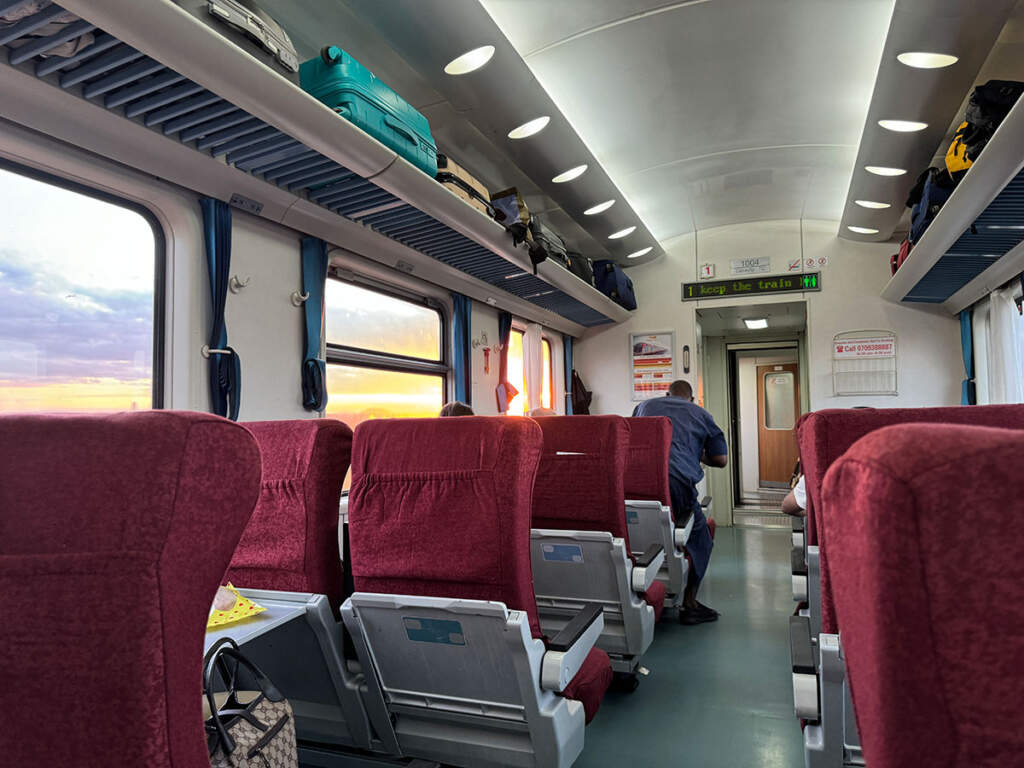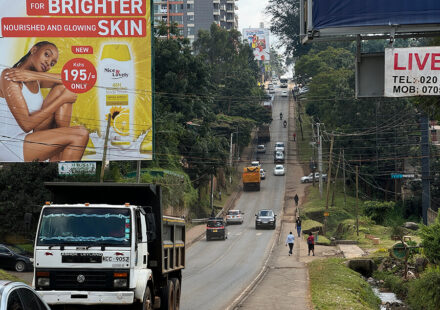This is our fourth time visiting Kenya, and each time we’ve included Mombasa, Malindi, or Watamu in our travel plans. We’ve explored various means to get to Mombasa, from road, rail, to air. In this guide, we’ll provide you with a detailed guide on how to get from Nairobi to Mombasa (and back), and at the end we offer our recommendation. I know it’s a long read, but this is our first time writing a guide, so please bear with us.

Whether you’re a backpacker, a couple, a family with kids looking for a memorable journey, and keen on exploring Kenya’s vibrant landscapes, we’ve got you covered. This guide will take you through the three main travel options—by train, car, and air—highlighting the pros and cons of each to help you make an informed decision.
Road Trip from Nairobi to Mombasa
For those who enjoy road trips, driving from Nairobi to Mombasa is an adventurous alternative that comes with many surprises. The 500 km (310 miles) journey offers flexibility and the opportunity to explore off-the-beaten-path attractions.
Imagine stopping at small towns, feeding monkeys at the side of the road, getting close to giraffes or even elephants, and enjoying the beautiful scenery, from greenery to desert-like conditions and beautiful mountains. The journey allows for spontaneous detours, such as a visit to Amboseli National Park, a quick stop at Voi for breathtaking views, or a picnic under an acacia tree.
Google Maps estimates the trip will take around 8 hours but depending on your driving and how many times you stop; it can take longer. The first time we drove to Mombasa, we were excited and made many stops to enjoy nature and take pictures, making our trip around 10 hours. Keep in mind that traffic inside Nairobi and Mombasa will add to your overall journey, for example, to cross from Mombasa old town to Nyali or Bamburi took us almost 45 minutes. The second time we drove, the journey took under 6 hours.
Be prepared for a mix of well-paved highways and rough patches, especially as you approach Mombasa. The roads are not fully developed, and certain sections can be quite challenging. Also, the main road is a two-lane road with outgoing and incoming traffic.
As of the time of writing this guide, the road leading to the popular resorts in Mombasa and towns such as Malindi and Watamu is under construction. This road has been under construction since our first visit to Mombasa in 2018 and is still in bad condition, making it difficult to drive.

The Scenic Train Ride to Mombasa – Kenya’s SGR
The Madaraka Express, commonly known as the SGR (Standard Gauge Railway), is a popular choice for those seeking both a scenic and comfortable journey from Nairobi to Mombasa. The train ride, which follows the main road, offers the same breathtaking views of Kenya’s diverse landscapes, including rolling savannas, majestic mountains, and wildlife in the national parks. We have seen some elephants and even lions while on the train.
There are two types of train services: Inter-County and Express. The Inter-County trains depart both from Nairobi and Mombasa Terminus simultaneously at 8:00 am every day. This service has few stops, we believe it was around eight including Voi, and gets you to Mombasa at 2:00 PM, making it a six-hour train ride.
The “Express” trains depart both from Nairobi and Mombasa train stations simultaneously at 3:00 pm and 10:00 pm, with only one stop at Voi. The “express” journey is not much faster, taking five and a half hours instead of the six-hour journey of the Inter-County train.
Economy or First Class
When booking the train ticket, you have two main options: economy and first class. Economy class offers seats in combinations of 4 and 6 seats and is usually fully booked and lacks air conditioning.
First-class seats have two-seat configurations that can change to four-seat configurations upon request. The seats have extra legroom, can recline, and feel softer for a long journey. You also have access to the restaurant as a first-class passenger, but the options are not different from what you can buy in the economy. The only difference is that you can sit and eat there.
We definitely recommend first-class seats.
Economy costs KSH 1500, and first class costs KSH 4500. Children pay KSH 750 in economy and KSH 2250 in first class, and tickets are free for children below 3 years old, although they will sit on a parent’s lap.
Booking and Boarding
You can book your tickets online at the official website. However, you’ll need to queue at the station to collect your physical ticket from a machine, and your seats are generated on the spot, meaning sometimes you will be allocated a random seat (Right now, you cannot change). If you are booking a ticket online, arriving early is advisable. We personally preferred to book the tickets at the stations a day before travel because we could select our seats.
You will also need your passport to book and board the train. Security is very tight, and you will undergo multiple searches, the first involving dogs sniffing your bags. Security checks are long and can be stressful.
We suggest booking your Uber or Bolt in advance once you arrive in Mombasa, as taxi drivers may try to scam you, and it’s very busy at the car park. As soon as you come out of the station, everyone will try to hustle you.
Flying for Convenience to Mombasa

As you probably guessed, flying is the quickest way to get from Nairobi to Mombasa and back. At the time of writing this guide, three airlines—Kenya Airways, and the two low-cost operators Jambojet Limited and Skyward Express—operate daily flights between the two cities, making it a convenient option for those with tight schedules.
Ticket Costs and Experience
Flight tickets range depending on the time and season. The cheapest return ticket we could find for two people was around £240, but a friend of ours flew recently with Skyward and paid £75 for a return ticket, describing the airline as the Ryanair of matatus.
While the planes are generally older models, the one-hour flight is a breeze and offers stunning aerial views of Kenya’s coastline as you approach Mombasa. It’s definitely a hassle-free option for those who prioritize speed and convenience. However, we had a bad experience at the airport where we were asked to pay extra, but we will write about this in a separate post at a later date.
Conclusion: Which is Best for You?
Train: Ideal for the Experience Seeker For a relaxed journey that allows you to soak in Kenya’s beauty, the train is the best option. It’s perfect for everyone, offering a scenic route without the stress of driving.
Car: Perfect for the Adventurous Road Tripper If you’re up for an adventure and love the idea of a road trip, driving offers unparalleled freedom. It’s ideal for groups and couples looking to explore hidden gems along the way, but we wouldn’t recommend it for families with small children. Plus, there are not many food options on the way apart from gas station stores.
Flight: Best for the Time-Conscious Traveler For those who need to get to Mombasa quickly, flying is the way to go. While it’s more expensive and the planes are older, the one-hour flight is a huge time-saver.
For us, it was the train ride although it was a little bit stressful at times.
If our guide helped you make an informed decision, we would be thankful if you bought us a coffee. Your support will help us cover hosting costs and fuel our daily coffee needs.
Cheers.














This was actually very helpful, a friend discovered your post on Pinterest and shared the link with me. This made our plans much easier. THANK YOU